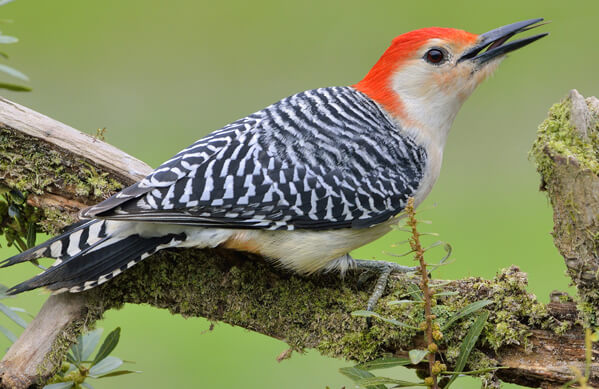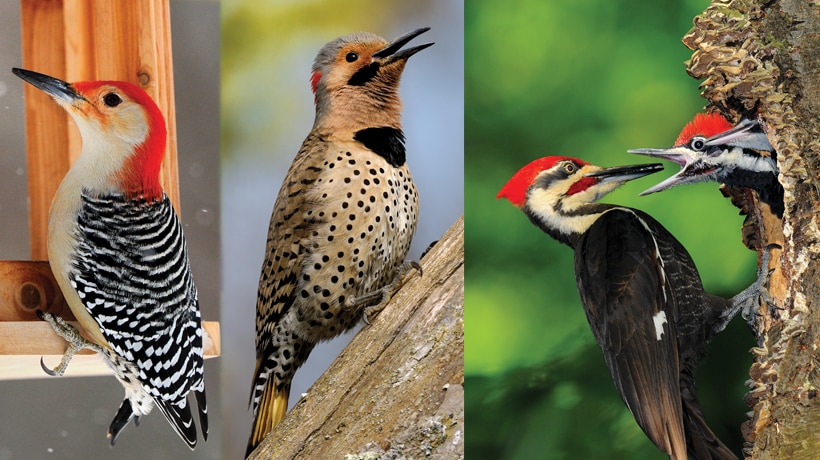Running Into Woodpeckers in Florida: Species Diversity and Recognition
Wiki Article
Discover the Fascinating Globe of Woodpeckers: Whatever You Need to Know
The globe of woodpeckers is a world loaded with unique actions, complex adaptations, and a varied variety of types. From their habitats and circulation patterns to their feeding practices and specialized physiological features, woodpeckers have actually long captivated the passion of ornithologists and nature lovers alike. Comprehending the complexities of these remarkable birds offers a glimpse into the complicated interaction between their biology and the setting. As we explore the globe of woodpeckers even more, we reveal a wide range of info that loses light on their value in ecosystems and the obstacles they face in an ever-changing world.Woodpecker Habitats and Distribution
Woodpeckers live in a varied array of environments worldwide, showcasing versatility in their circulation patterns. These resilient birds are discovered in forests, forests, savannas, and deserts across different continents, demonstrating their capability to flourish in different climatic conditions. In The United States and Canada, for instance, woodpeckers can be identified in both coniferous and deciduous woodlands, using their solid beaks to forage for bugs and produce nesting tooth cavities in trees. Likewise, in Africa, specific woodpecker varieties have adapted to dry settings, such as the acacia timberlands, where they play an important duty in managing insect populaces.
Feeding Behaviors and Diet Plan
Amongst the various aspects of their behavior, woodpeckers exhibit distinct feeding practices and dietary preferences. These birds are largely insectivores, with a diet regimen that consists of ants, beetles, caterpillars, and various other pests located in trees. Woodpeckers utilize their solid beaks to drill into the bark of trees, probing for pests and larvae concealed under the surface area. Along with bugs, woodpeckers additionally consume nuts, seeds, fruits, and sap. Some species have actually specialized tongues with barbed pointers that aid them draw out bugs from crevices in wood.Woodpeckers are known for their drumming behavior, which offers not just to interact with various other woodpeckers however also to situate food. The quick drumming noise is created by the bird pecking on powerful surfaces like dead trees or metal posts. This habits can attract pests concealed in the wood, permitting the woodpecker to discover their existence and feed on them.
Unique Adjustments for Tree Climbing
In their proficient pursuit of pests hidden within tree bark, woodpeckers have evolved exceptional anatomical attributes that furnish Homepage them with unique adjustments for efficient tree climbing. One of the vital adaptations is their zygodactyl feet, with 2 toes directing forward and 2 pointing backwards, offering a strong hold on tree trunks. This specialized foot plan allows woodpeckers to hold on to upright surfaces easily, enabling them to move up and down trees with dexterity. Additionally, woodpeckers have stiff tail feathers that serve as a supportive prop while they climb up, assisting in balance and security. Their strong, chisel-like beaks are not just used for exploration into wood yet also for grasping onto bark as they rise tree trunks. Additionally, woodpeckers have see here now solid neck muscle mass and an one-of-a-kind skull framework that soak up the impact of continuous pecking, enabling them to climb up vertically without triggering injury to their minds. These adaptations showcase the unbelievable transformative design that allows woodpeckers to navigate trees with accuracy and effectiveness.Diverse Woodpecker Types Worldwide
With over 200 different species spread across numerous environments worldwide, the family members of Picidae encompasses an amazing diversity of woodpeckers. These birds can be found in forests, timberlands, savannas, and also metropolitan areas, showcasing their flexibility to various atmospheres. From the renowned Northern Flicker in North America to the colorful and evasive Crimson-backed Flameback in Asia, each woodpecker types displays special attributes in regards to quill, habits, and habitat choice.Woodpeckers differ significantly in size, with the small Downy Woodpecker measuring around 6-7 inches in size, while the effective Lineated Woodpecker can rise to 17 inches - Woodpeckers in Florida. Their beaks additionally can be found in different sizes and shapes, mirroring their feeding routines. Some species focus on drawing out insects from tree bark, like the Acorn Woodpecker, while others, such as the Black-cheeked Woodpecker, prey on fruits and seeds

Conservation Efforts and Obstacles
Conservation initiatives for woodpecker populations are vital in alleviating the influence of environment loss and various other threats facing these diverse avian types. Woodpeckers deal with various challenges to their survival, mainly because of logging, urbanization, environment adjustment, and intrusive varieties. To address these issues, conservation efforts focus on safeguarding and bring back woodpecker habitats, executing sustainable forestry methods, and elevating awareness regarding the relevance of these birds in ecological communities.One significant difficulty in woodpecker preservation is the fragmentation of their environments, causing separated populations that are much more susceptible to extinction - Woodpeckers in Florida. Guardians function to develop wildlife corridors and safeguarded areas that attach these fragmented environments, enabling woodpeckers to relocate in between various areas for feeding, breeding, and sanctuary

Final Thought
In conclusion, woodpeckers are fascinating birds with special adjustments for tree climbing and feeding habits. Additional research and conservation activities are required to make sure the survival of woodpeckers in the wild.Report this wiki page